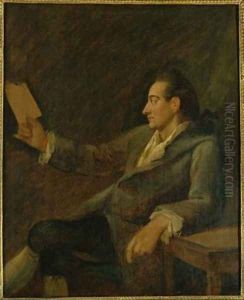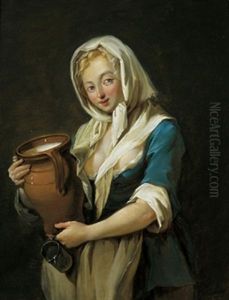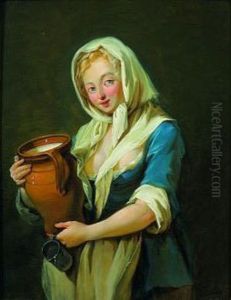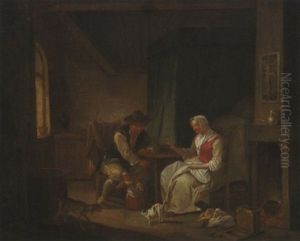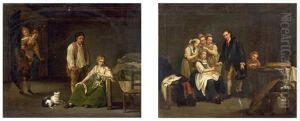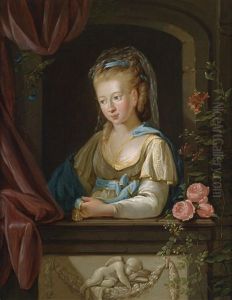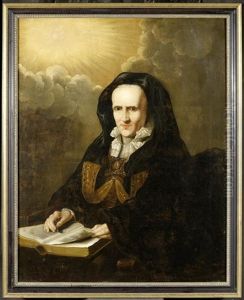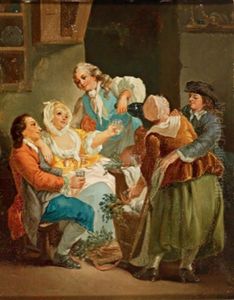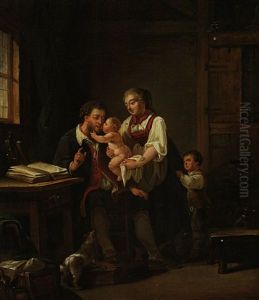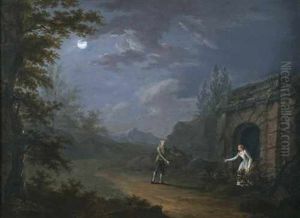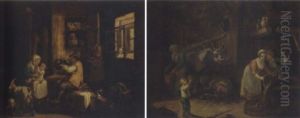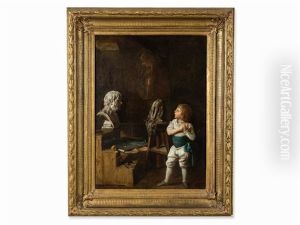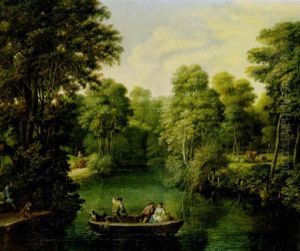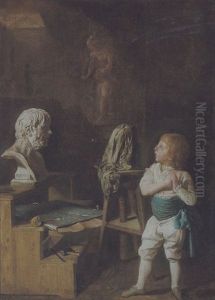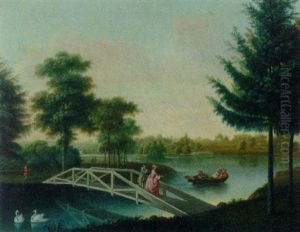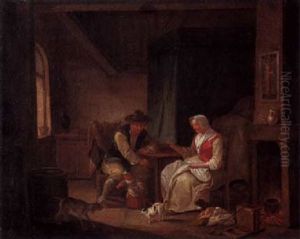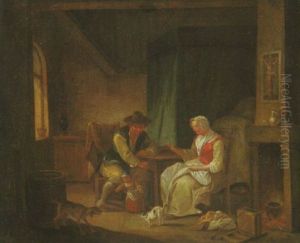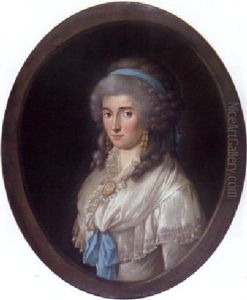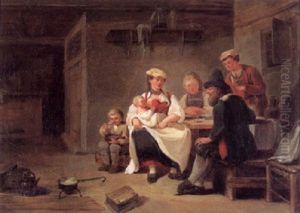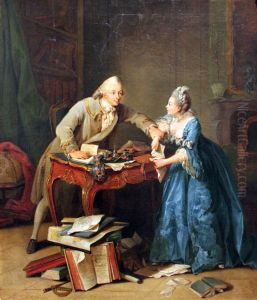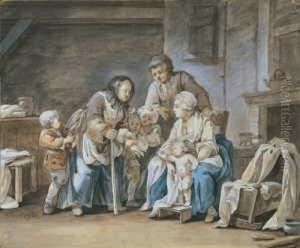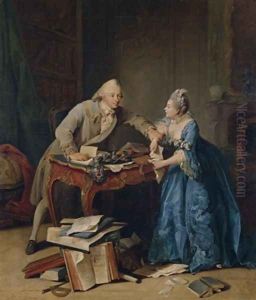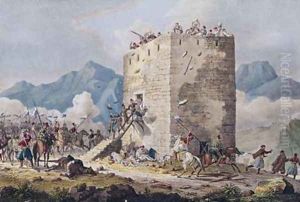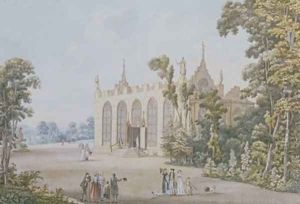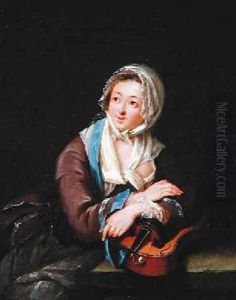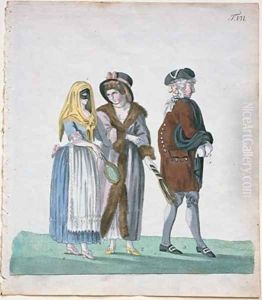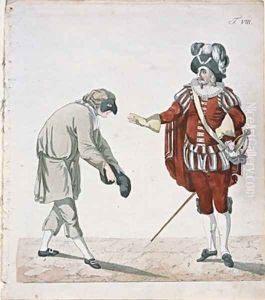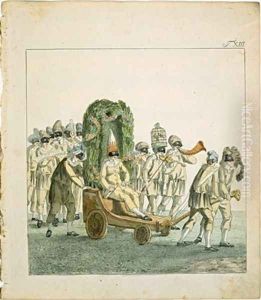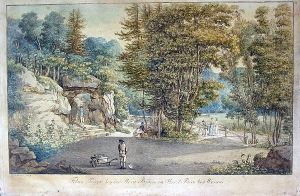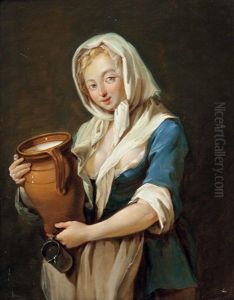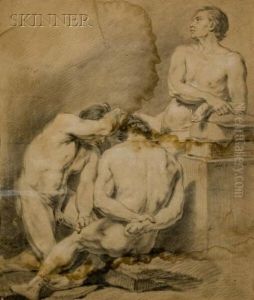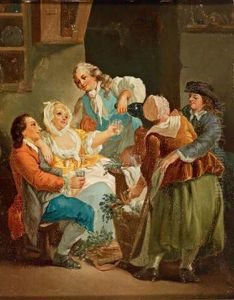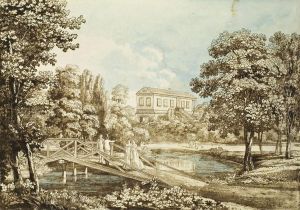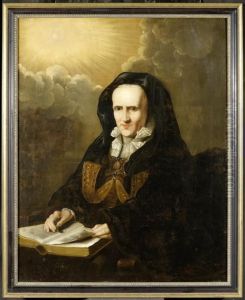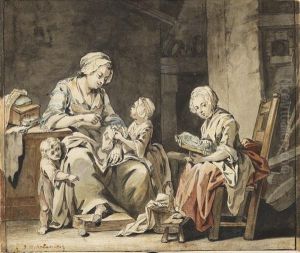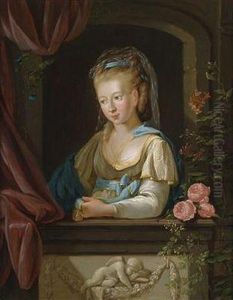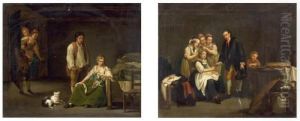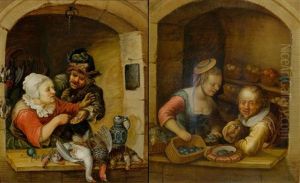Georg Melchior Kraus Paintings
Georg Melchior Kraus was a German painter, engraver, and pedagogue, born on July 26, 1737, in Frankfurt am Main. Coming from a family of artists, Kraus was encouraged to pursue an artistic career from an early age. He initially trained with his uncle, Johann Andreas Benjamin Nothnagel, and later continued his studies in Paris, where he was influenced by the French Rococo style, particularly the works of François Boucher and Jean-Honoré Fragonard.
Kraus's early works were primarily portraits and genre scenes. However, as he matured as an artist, he became known for his landscape paintings, which were among the first to reflect the influence of the English landscape garden movement in Germany. He was also an adept engraver and created several series of prints that depicted various social classes and occupations.
In 1775, Kraus was invited by Anna Amalia, Duchess of Saxe-Weimar-Eisenach, to become the director of the newly established Free Drawing School in Weimar. This position allowed him to play a pivotal role in the cultural development of the city, making it a center of the German Enlightenment. Kraus became a close associate of the famous German writer Johann Wolfgang von Goethe, and together they embarked on several study trips, exploring the Harz Mountains and the Rhineland. His association with Goethe and other leading figures of the day, such as Friedrich Schiller, placed him at the heart of the Weimar Classicism movement.
As an educator, Kraus had a significant impact on the next generation of German artists. He emphasized the importance of nature in art and encouraged his students to study from life. His teaching methods combined both theoretical and practical instruction, which was innovative at the time.
Georg Melchior Kraus continued to work and teach in Weimar until his death on November 5, 1806. His legacy includes not only his contributions to German art and pedagogy but also his influence on the cultural milieu of Weimar, which became known as the Weimar Classicism period. Kraus's works are preserved in various German museums, and his efforts in art education have been recognized as foundational to the further development of art schools in Germany.
